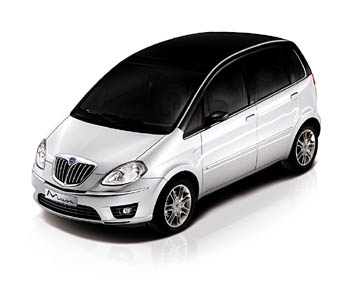 |
|
Making its Lancia debut on the Musa in
Frankfurt will be Fiat's new Start&Stop
system that was developed by FPT, Bosch and
Magneti Marelli, already introduced on the
Fiat 500 it is set to also debut at the
motor show on the new Punto Evo. |
|
|
|
Making its Lancia debut on the Musa in Frankfurt
will be Fiat's new Start&Stop system, already
introduced on the Fiat 500, and set to also
debut at the German motor show on the new Punto
Evo, which was developed by FPT, Bosch and
Magneti Marelli – which aims to increase vehicle
efficiency by reducing fuel consumption, harmful
gas emissions and noise pollution.
The Start&Stop system recognises when the car is
stationary (thanks to position sensors on the
brake and clutch pedals and vehicle speed
measurements) and, if the engine temperature and
battery charge allow, switches off the engine
when the driver engages neutral and takes
his/her foot off the clutch (for a manual
gearbox) or keeps the brake pedal depressed (for
a DFN robotised gearbox). Then, it restarts the
engine as soon as the clutch pedal is depressed
(manual) or the brake pedal is released (DFN).
[DFN is the Lancia designation for the Dualogic
transmission]. All electrical devices continue to work when the
engine is switched off.
In order to maintain comfort levels, the system
will not activate in certain conditions: for
example, if the air conditioning is on full
power, the heated rear window is on, reverse is
engaged (e.g. for parking manoeuvres) or the
outside temperature is too cold. In addition,
the Start&Stop system does not activate if the
operation of the car (e.g. the engine is cold,
the battery is running low or, in diesel cars,
particulate filter regeneration is taking place)
or the safety of the driver and passengers (e.g.
the driver's door is not closed or the safety
belt is not fastened) is compromised.
The engine can be stopped automatically only
once a speed of about 10 km/h has been reached,
to prevent the engine from being repeatedly
stopped when driving at walking pace.If the
engine has been automatically switched off for
more than three minutes, it starts up again. If,
after the engine has automatically restarted,
the driver is inactive for around three minutes,
the Start&Stop system turns off the engine once
and for all, to prevent fuel consumption (Energy
Saving function). In this case, the engine can
be restarted only by using the key. The system
is enabled every time the car is started, and
can be disabled/re-enabled by a button located
on the dashboard which has a light that comes on
when the system is disabled (a message also
appears on the instrument panel). The Start&Stop
system is most effective when the car is used
primarily in towns and cities, where it reduces
fuel consumption by 10 per cent in the urban
cycle.
At Frankfurt, the system is paired with the 95
hp 1.4 16v Euro 5 engine, whose CO2 emissions
are cut (in the mixed cycle) from 146 to 140
g/km (with manual gearbox) and from 136 to 130
g/km (with DFN robotised sequential gearbox)
compared with the version without Start&Stop.
The introduction of the Start&Stop system to the
"city limousine" just a few months after the
launch of the ECOCHIC hybrid petrol/LPG versions
is yet another example of Lancia Automobiles
being constantly aware of environmental issues
by researching and developing concrete and
affordable solutions. This strategy can be
summed up in the motto "The environment is a
luxury we can all afford".
|